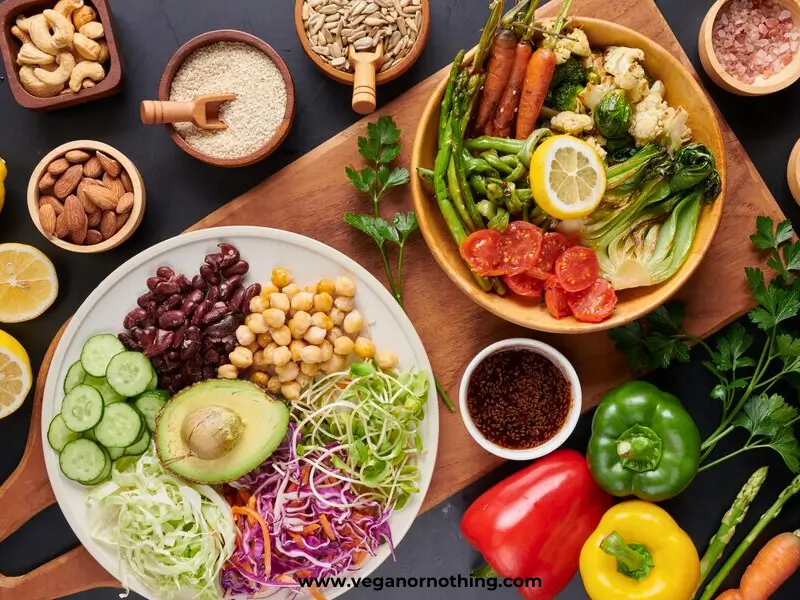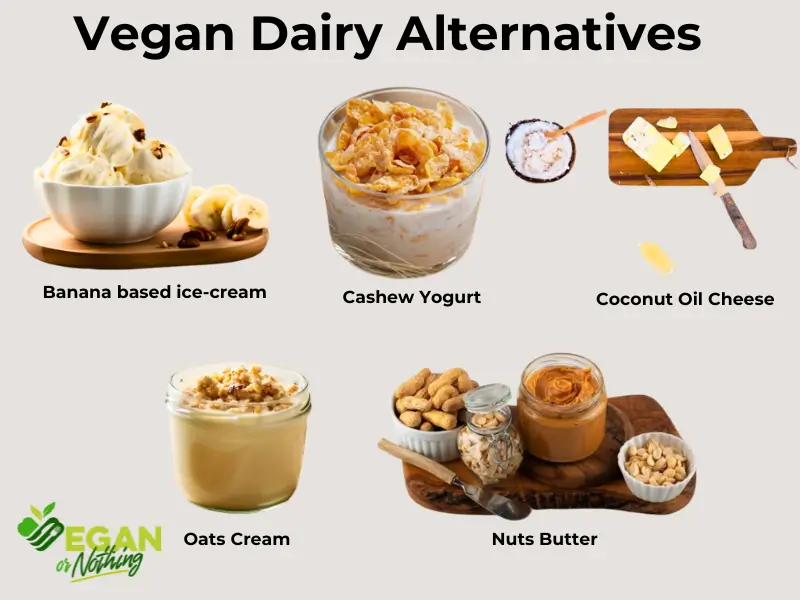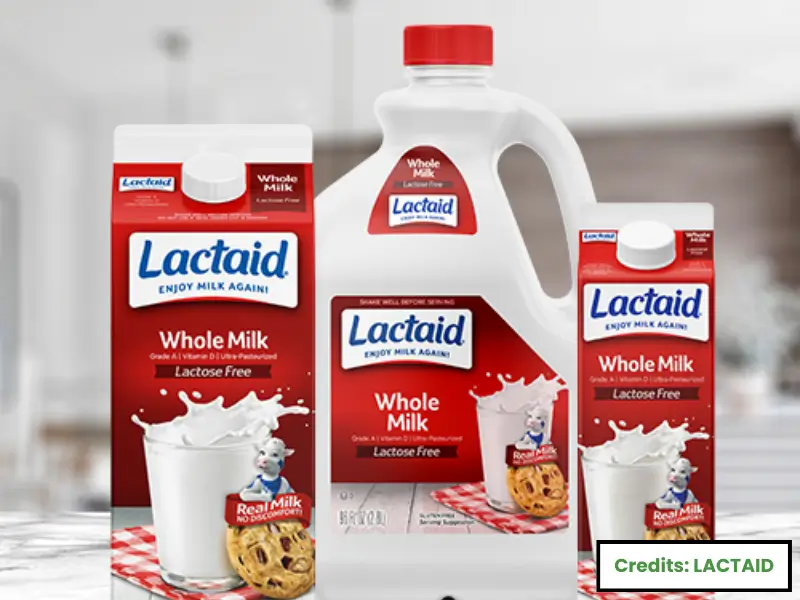Read time: 6 mins.
Table of Contents
Is Vegan Dairy Free?
Our decision to adopt a vegan lifestyle was not without its challenges, mainly when it came to dairy. We all had our favorite dairy products that we couldn’t imagine living without.
Emma cherished her morning cereal. Mark’s day wouldn’t be complete without a cup of coffee with milk, and I found solace in a glass of milk before bed.
To us, these were more than just food items; they were part of our daily rituals and comfort zones.
This question wasn’t simple. It led us on a journey of discovery, diving deep into the world of dairy alternatives and understanding what being vegan truly means.
If you’re looking for a straightforward answer, yes, going vegan means saying goodbye to dairy.
Let’s delve into this topic further and unravel the complexities of this dairy dilemma.

What is a Vegan Diet?
A vegan diet is more than just a way of eating; it’s a lifestyle choice that excludes all animal products and by-products. This means no meat, dairy, eggs, or products derived from animals. For us, this meant a significant shift in our daily meals, but it was a change we embraced wholeheartedly.

Both vegan and dairy-free diets avoid dairy products, but a vegan diet takes it a step further. It excludes all animal-derived ingredients, ensuring that our meals are entirely plant-based. This approach not only aligns with ethical and environmental considerations but also offers numerous health benefits.
What is a Dairy-Free Diet?
A dairy-free diet avoids all milk products, such as cheese, butter, milk, and yogurt. It’s a common choice for those who are lactose intolerant or have a dairy allergy.
However, being dairy-free doesn’t necessarily mean that the diet is vegan. While it excludes dairy, it can still include other animal-derived products.

As you can visualize from the picture above, a dairy-free diet might still incorporate non-vegan ingredients like honey, gelatin, and lecithin. These items come from animals but aren’t classified as dairy. This distinction is essential for those considering a vegan lifestyle, as veganism excludes all animal products, while a dairy-free diet focuses solely on eliminating dairy.
Understanding this difference helps make informed dietary choices that align with personal health goals and ethical considerations.
Why is Dairy Not Vegan?
One of the fundamental principles of veganism is altogether avoiding all animal products. This means that dairy, which comes from animals, is not considered vegan.
To help my six-year-old daughter, Emma, understand this concept, I explained that living beings should not be exploited for food. We took her to a farm where she could play with the animals, allowing her to see them as friends rather than food sources.

There are also significant health and environmental reasons for avoiding dairy. Health-wise, eliminating dairy can reduce the risk of certain diseases and improve overall well-being.
Environmentally, the dairy industry has a considerable impact, contributing to greenhouse gas emissions, deforestation, and water consumption.
By choosing a vegan lifestyle, we not only forsake animal products but also make a positive choice for our health and the planet.
Vegan Dairy Alternatives
Almost all dairy products now have vegan, dairy-free alternatives. You can find milk made from oats, peas, nuts, and butter crafted from vegetable oils. Even ice cream has vegan versions, using ingredients like soy, oats, and cashews.
If you’re considering going vegan and worry about missing out on your favorite dairy delights, think again. The vegan market has expanded significantly, with businesses investing time, money, and effort into developing delicious alternatives.
These products are not only cruelty-free but also offer great taste and nutrition.

You won’t have to sacrifice flavor or variety, whether it’s a creamy oat milk latte, a rich cashew-based ice cream, or buttery toast spread with plant-based margarine. Embracing a vegan lifestyle has never been more accessible or enjoyable, thanks to these innovative alternatives.
How To Know If You Are Purchasing The Right Products
Navigating the grocery store aisles to find the right products can be a daunting task, especially when you’re new to a vegan or dairy-free lifestyle. Understanding labels and ingredients is crucial. Here’s a guide to help you make informed choices:
Dairy-Free
When you see the “Dairy-Free” label, you can be confident that the product contains no dairy. This claim is strictly adhered to, meaning it will not include milk, cheese, butter, or any other dairy products.

However, it’s essential to check the ingredients list still because “dairy-free” does not necessarily mean free from all animal products. For instance, a dairy-free item might still contain eggs or gelatin. Always double-check the ingredients to ensure the product aligns with your dietary choices.
Vegan
The “Vegan” label indicates that the product is made without any animal ingredients. However, it’s important to note that no legal framework regulates this label. While many companies strive to meet the standards of veganism, the lack of regulation means there’s some variability.

Most reputable companies get their products certified by one of the 17 international vegan labels, so looking for these certifications can provide additional assurance. Also, look for the “may contain milk” statement, which indicates possible cross-contamination with dairy products. This is especially important for those with severe allergies.
Lactose-Free
Products labeled “Lactose-Free” have had the lactose removed or reduced. However, it’s essential to remember that lactose-free does not mean dairy-free or vegan. Lactose-free milk is still milk, and lactose-free cheese is still made from dairy. Always check the ingredients list to ensure the product meets your vegan or dairy-free criteria.

Plant-Based
“Plant-based” is a term that’s closely associated with veganism, but it’s not always synonymous. Plant-based products focus on plant ingredients, yet they might still contain animal-derived ingredients like milk or honey. As with any other label, it’s crucial to carefully read the ingredients list to confirm that the product is vegan and dairy-free.

Tips for Reading Labels
- Ingredients List: The ingredients list is your best friend. Look for familiar vegan indicators such as no meat, dairy, or eggs.
- Allergen Statements: Pay attention to allergen statements that might indicate the presence of milk or other animal products.
- Certifications: Recognize the vegan certifications. These logos can give you extra peace of mind.
- Research: Some terms can be misleading, so researching unfamiliar ingredients can help you make the best choice.
Understanding these labels and what they mean can help you make confident decisions that align with your dietary preferences.

Conclusion
Initially, you’ll find yourself spending a lot of time in the grocery store reading labels. My husband, Mark, used to get annoyed when I picked up every product and scrutinized its ingredients.
But this step is crucial. Adopting a vegan or dairy-free lifestyle requires intent and research.
However, once you get accustomed to it and have identified all the grocery products that meet your taste and requirements, life will become much easier. Trust me, the effort you put in at the beginning will pay off, making your shopping trips quicker and your meal choices more satisfying.
Also Read: Finding the Best Vegan Cream Cheese: A Family’s Journey Through Eight Brands

